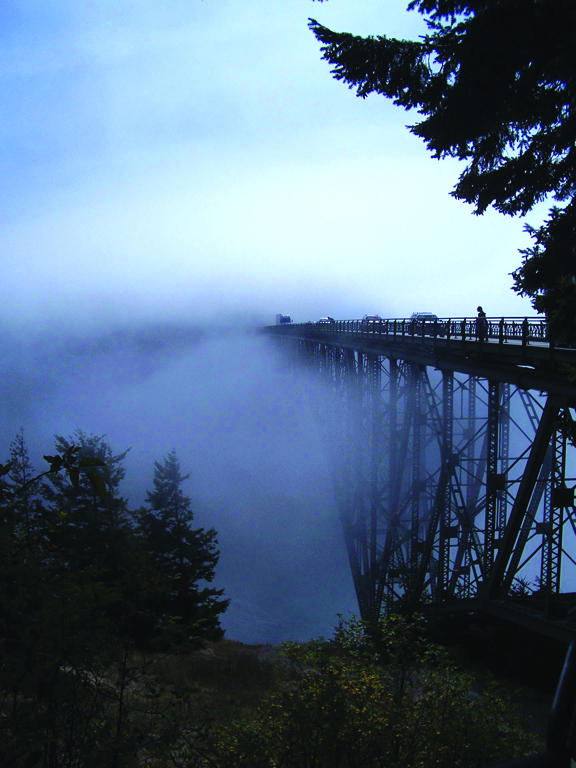After months of planning, you’ve finally made it to your dream destination—and what happens? A storm rolls in, and rain or fog or snow are getting in the way of all those great photos you were going to take. Now how are you going to get any photos? Here are a few suggestions on how to get a great photo in spite of the weather.
Dealing with Fog
Fog can add drama to a photograph in the way it obscures and reveals objects. Because the fog’s movements can change the look and feel of the picture in just a few moments, take lots of shots (that’s the beauty of digital photography—no wasted film!) and remember to be patient. The perfect photo might materialize if you just wait long enough.
Capturing Falling Snow
An issue with photographing snow is trying to capture falling snow. The enchantment of snowfall is the fact that it is moving, and since movement is difficult to catch with a still photograph, falling snow doesn’t show up well. Using a fast shutter speed may allow you to freeze the snowflakes in midair, but they might look like dust specks. Using a slow shutter speed so the movement of the snowflakes shows up can make the picture look like it is covered in white scratches. While it is snowing, take a few shots with various shutter speeds and do the best you can with landscapes. But look for other interesting shots, such as the details of an intact snowflake on a surface or the way snow mounds on top of objects.
Getting the Light Right in Snow
The reflectivity of snow causes several huge problems for your camera—washed out highlights and dark shadows are two of the biggest. The fixes for photographing sunny snow all lie in manipulating your camera’s ISO settings (sensitivity to light), aperture size (how much of the film is exposed to the light), and shutter speeds or f-stops (how long the film is exposed to the light).
To reduce the glare of bright light, make the aperture smaller and the shutter speed faster, letting in less light. To bring details out of the shadows, open the aperture wider and use a slower f-stop, letting in more light and therefore allowing the camera to pick up details in dark areas. Unfortunately, it is extremely difficult to get the best of both worlds without digital photo editing, so you will have to choose which effect you want more.
Reading the Manual
While you’re at it, go ahead and pull out that chunky user’s manual or go to the internet to find out how to take advantage of all the features your camera came equipped with. Remember: just because you haven’t used a setting on your camera doesn’t mean it doesn’t exist.
Protecting your Camera
Another thing to remember when working with inclement weather: protect your camera from the elements. Getting water inside a camera in any way is a virtual death sentence for your camera, and it can be dangerous. Putting the camera in a Ziploc bag is surprisingly effective, as long as you hold the plastic tight against the lens while photographing.
The next time you’re caught in a rainstorm or find fog billowing up around your perfect photo subject, remember that you can weather this one out. Go ahead and get snapping, and see if your perfect winter snapshot is waiting right before your eyes.
—Diana Dzubak




Great photography tips to remember.